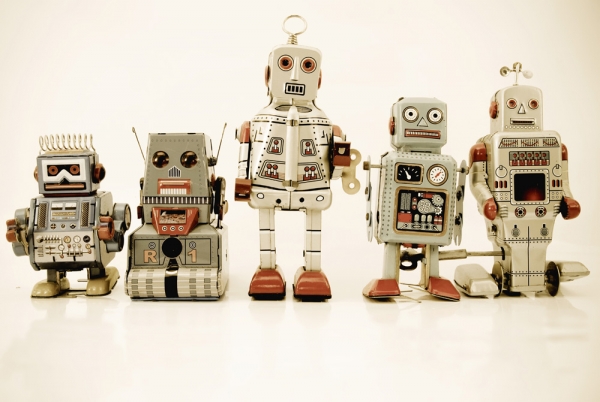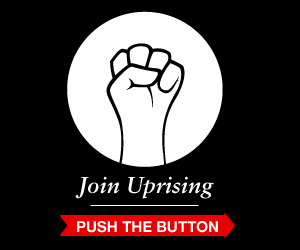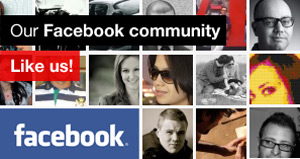What Does The Future Look Like?
Posted on 25th Nov 2011 by Tover Banda in Blog
Amid the freeform frogspawn, misshapen, rusting detritus and general flotsam and jetsam I’ve picked up, sniffed at, and discarded back into the canal of experience, one thing remains constant as regards ‘The Future’: it’s largely seen as taking place in a time we’ve yet to experience. We anticipate it will come, but it effectively has no temporal boundaries other than those we choose to impose.
To therefore answer the question, I’m going to have set some parameters – lasso and reign in some specific conjectures. Let’s roll up our sleeves and sift through what I have in front of me.
Perhaps the best way of setting out what The Future looks like is to appreciate how it’s perceived as a cultural phenomenon. For me this means analysing several manifestations, and making myself refer to them in a fashion that bastardises linguistic terminologies. The desired effect is to ultimately make me sound more intelligent, so here goes.
Interpretations of The Future are rife in popular culture. A particularly effective mechanic is to use the example of a ruined or dystopian future to hold up a mirror to the present, and shame us into fixing our errant, unsustainable ways. Let’s call this The Imperfect Future. Images of a post-apocalyptic society are alarmingly abundant in film and literature, but both present a future that is wholly recognisable – a current world made infantile, yearning for a technologically advanced and bountiful idealised past – which of course is our present. In literature, I’m thinking Riddley Walker, A Canticle for Leibowitz, or even The Road. I’m also going to place Margaret Atwood here. The Year of The Flood, Oryx and Crake and The Handmaid’s Tale being her most notable and arresting examples.
Then there’s the future-made-past – The Conditional Future – what could have been. I hate to say it but...Star Wars is the most obvious example – ‘Long, long ago in a galaxy far, far away’. The supposition that alien cultures have lived, fought each other, been made extinct and risen again – all whilst Earth was still primordial soup – is a compelling idea.
Equally intriguing is The Future Perfect, the anodyne, pastel coloured future where our every whim is indulged and catered for and no one is unhappy. However, there’s always an unsettling price to pay, masking the veneer of perfection. Think Logan’s Run or even The Stepford Wives.
Curiouser still is what I’d term The Subjunctive Future – the world we’re accustomed to, but with futuristic trappings we’d like to have. In this category, I’d put William Gibson’s superb short story collection Burning Chrome and pretty much anything by Philip K. Dick or Jules Verne. See also Back To The Future Part 2.
More questionable, at least as a product of The Future, is what I’m calling The Reflexive Future. I refer in particular here to works where form reflects the chaotic nature of the content, which convincingly immerses the reader or viewer into the experience. Such works create their own individual logic and therefore, allow anything to be possible and/or plausible. Hmm. I think this deserves to be here simply because it’s avant garde – which essentially means ‘ahead of its time’. When next at the bookstore, check out William S. Burroughs’ seminal The Naked Lunch, Donald Bartheleme’s Sixty Stories and film-wise, explore the work of Harmony Korine, at considerable length. I can’t express that last point strongly enough.
Regardless of which futuristic idiom is the most pervasive, what determines how The Future looks is the temporal definition of modernity – whatever is considered new or revolutionary in the era that creates that future. Think how visions of The Future in the 1970’s differ from those in the 1980’s. Did the year 1999 look like the TV series of the same name? Was the party over like Prince promised it would be? All things considered, it’s such an important and popular topic because imagining The Future enables us to be innovators, and truly create something new and individual that is all our own.
There can be no doubt that these ideas permeate modern advertising in both form and function. Perhaps more so than anywhere else. Increasing numbers of agencies are living it through digital media and social sharing platforms.
Thinking about The Future of advertising with my industry-aware hat on for a moment, what’s clear is that personalisation and preferential treatment will become ever more important to brands. Just as everyone wants to create something new, we all want to feel special and be seen as beautiful and unique snowflakes. Just look at how social media is helping consumers to become brands themselves. Brand Me. Personal branded identity. Consumers are creating the advertiser’s future and it’s down to agencies to make the experience as rewarding as possible and to empower and grow the scope of that experience.
However, this process needn’t be wholly technology-led. The brand scramble to intimately and authentically engage consumers is dominated by online media because of a) the abundant possibilities and b) over half a billion consumers are spending a large amount of time on one social networking site. Things change. And they will. Advertising works best when it’s offering value – and whether that’s a discount, advice or a smartphone app – the idea behind the mechanic needs to be strong enough to hold its own.
Personally, I’d love the world to evolve into a Kurtzweilian-Gibsonian chimera. The convergence of technology meets the divergence of art, at the corner of Advertising and Branding, where anybody can check in on FourSquare to claim their mayorship. Or steal the crown from the current pretender.
As long as there are multiple interpretations of The Future being created, the more rooted our belief in the existence of a future-as-to come. The more we speculate, the richer the possibilities to inform and influence the here and now.
blog comments powered by Disqus







